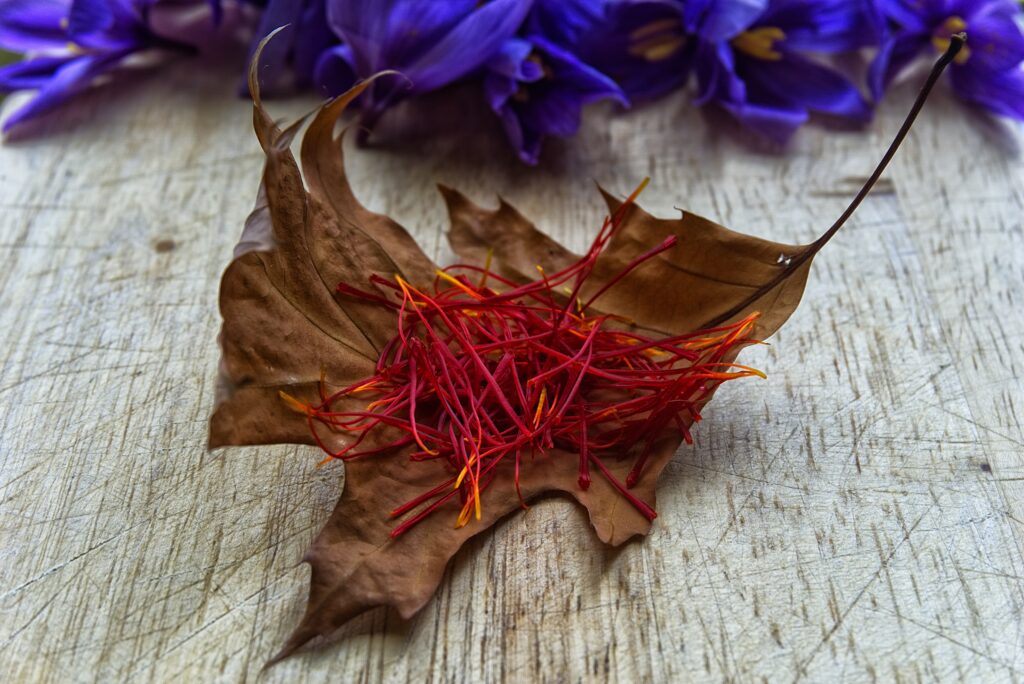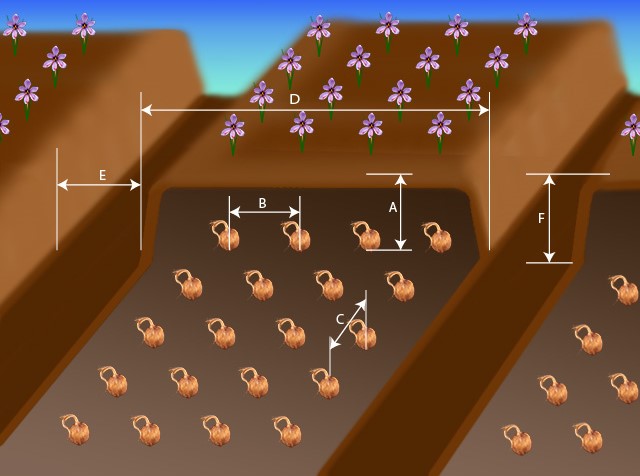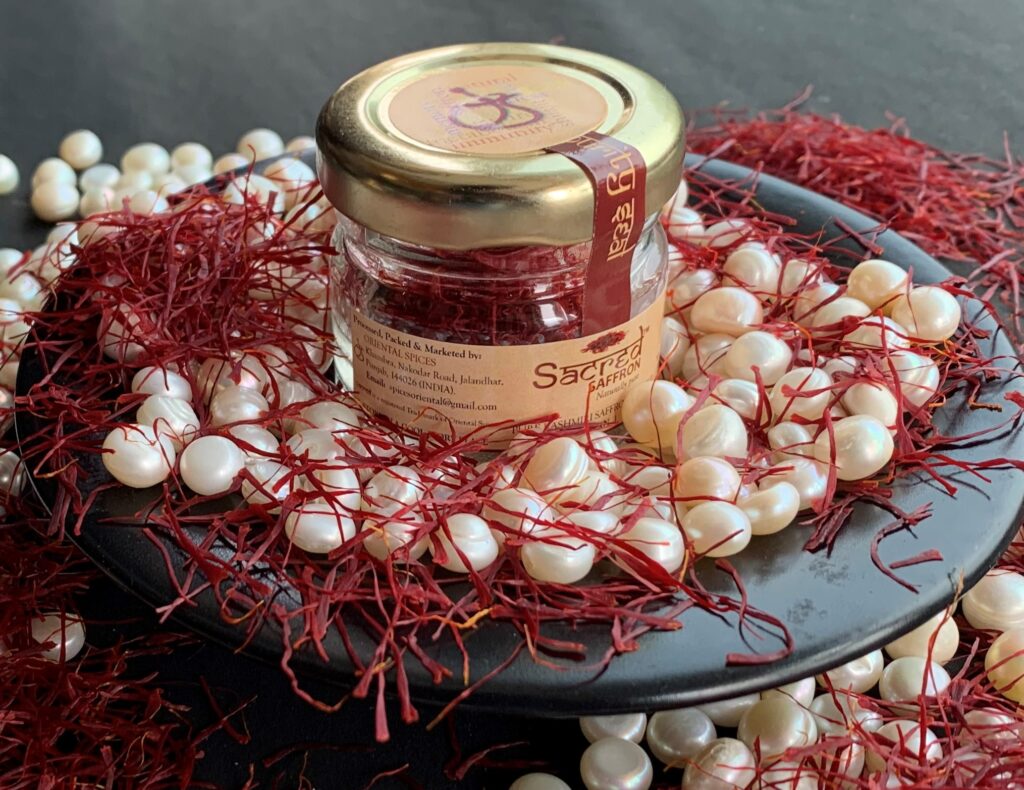
Journey of 1kg Saffron: Explanation
From Corm to Bloom to Kesar threads, Journey of 1kg Saffron Explained!
The 7Ps of 1 kg Saffron production.

Good things take time, effort and detail; so does the best of spices, Saffron!
Saffron, the crimson spice, has for ages retained its position for being the most unique flavouring, colouring and fragrant agent across the cultures. The saffron that you see on your kitchen shelf has travelled all the way from the most beautiful places on earth being processed, harvested and packed by the most expert men. Moreover, the key reason for Kesar being the costliest spice in the world is the detailed process of production it undergoes during its lifetime. To know more about the reasons for expensive saffron pricing click Here. It is also one of the rare plants that are still hand- harvested in the 21st century and requires a great deal of meticulous approach which can affect its quality very minutely.
Excited to know about the Biography of Saffron?
Short of Time?
Keeping in mind your busy schedules, we have tailored the otherwise lengthy story of our best friend and your business partner into 7 Ps that purposefully answers: How is 1 kg of Saffron made?
The 7 Ps are as follows
- Preparing the field
The hosting environment is selectively limited for a high quality crop production, largely affecting the super spice market standards later, which are explained as follows:
- Dry, well drained and acidic soil (ph 6-9) that can retain light moistures all the time.
- Significant exposure to the sun is required (12 hours) for the blooms to bloom properly
- The soil must be tilled and properly drained before the sowing of Corms as they can die of waterlogging very easily.
- The check for rodents/pests must be conducted beforehand once the corms are planted and again when the flowers bloom. Blooms achieved with the help of pesticides would be impractical and would also harm the crop/corms very much.
2. Planting Corms

Saffron has yet another way of differentiating itself from the commercial crops, its propagation through vegetative parts and not through the exploitable HYV (High Yielding Variety) Seeds.
Now the expertise of our great farmers steps in who have been traditionally growing this crop with the help of their subconscious science without any conscious knowledge of science.
> A fallow land (without any Crocus Sativus or alike cultivation in last 10 years) is best prefered for the best yields of saffron
> A proper pit of 7-15 centimeters is ploughed to help corms rest there till they vegetate further.
> A specified row space is also to be left between two saffron corms for achieving good yields.
> Planting is done in July, August and September
It needs to be mentioned that Puri Brothers have successfully achieved ties across generations with the farmers sourcing their saffron since 1951. We have aimed for a sustainable business model, not exploiting any of our stakeholders for the sake of hefty profits, because business is best done professionally.
3. Parenting the Crops

The way with which saffron farmers parent their crops is exemplary and probably the reason for the spice being the best in the world. Regularity in irrigation and draining is the utmost important thing during the sprouting periods. Moisture levels for Crocus are to be maintained at different set levels at various stages. Organic Fertilisers are advisable to be added either during the planting or while parenting.
It might take 6-8 weeks (Autumn) for the bulb to produce a flower (yes a single bulb produces a single flower). Or if the timing isn’t perfect, the bloom could even be delayed till the next fall!
Removing weeds, protection from rodents, weeds, insects, etc. also form an important part of parenting
4. Procuring Stigmas and Styles

Each corm blooms into a single flower and each flower sources 3 stigmas that are separated by hand from the flower once it is plucked. This process might seem easy but needs to be repeated 150,000 times for a single Kilogram of saffron! Yes, 150,000 times, and to date, all this is done with hands properly skilled for the process. And these 150,000 flowers and further separations take around 400 labour hours to be executed. This makes saffron one of the most labour intensive crops in the world.
Also these purple flowers need to be harvested by the dawn of the following day when they first bloom as they tend to become more sagged with each successive hour.
5. Processing Saffron
Once the flowers are plucked, the stigmas and styles are stripped off the flower and only the red and orange parts are kept, rest are all discarded and other floral waste is also carefully removed.
The stigmas then achieved are carefully dried (toasted) to remove the water from them. This also helps the strands ,achieve the classic crimson texture associated with them.
Puri Brothers is proud to have their own in-house experts team for processing the saffron which is our biggest advantage against our competitors who always tend to source the expertise from outside, that definitely lacks personalisation and a B2B concern is all about personalisation.
6. Passing the lab tests

Saffron after being processed undergoes a rigorous lab testing phase, at least at Puri Brothers, because we value quality the most. Firstly we test our own batches of saffron by spectroscopic and chromatographic analysis.
Then the saffron passes through some external laboratory tests that are accredited by the authorities, in our case National Accreditation Board for Testing and Calibration Laboratories (NABL). Getting our saffron tested from external laboratories is yet another addition to the USPs of Puri Brothers since this is something avoided by B2B firms to save costs, but we conduct batch-wise tests regularly to ensure customer satisfaction.
Based on the test reports and analyses made, saffron is graded according to the varieties listed in ISO 3632 standard. For a brief introduction of various grades listed as per ISO 3632 visit our product page {here}.
7. Packaging in Premium Jars

Once the superspice is ready for use, it has to be packed and stored with equal caution: in air-tight glass containers to maintain its individuality. We went a step ahead at Puri Brothers by providing convenient 1 gram packings for individual use. Our jars are safe for storage of upto 2 years- the actual shelf life of saffron. To get an overview of our products and packings, visit.
We also provide customised packing solutions for your businesses, to know more about that, contact +918146967058.
The Puri brothers Motto and Commitment
Puri Brother’s motto for transparency ‘You get what you order for, at what you order for!’ is the reason for the pure legacy being carried on for 70 years in the trade with ever increasing customer base. And we commit to abide by this fully and more soulfully each successive year.

Leave a Comment